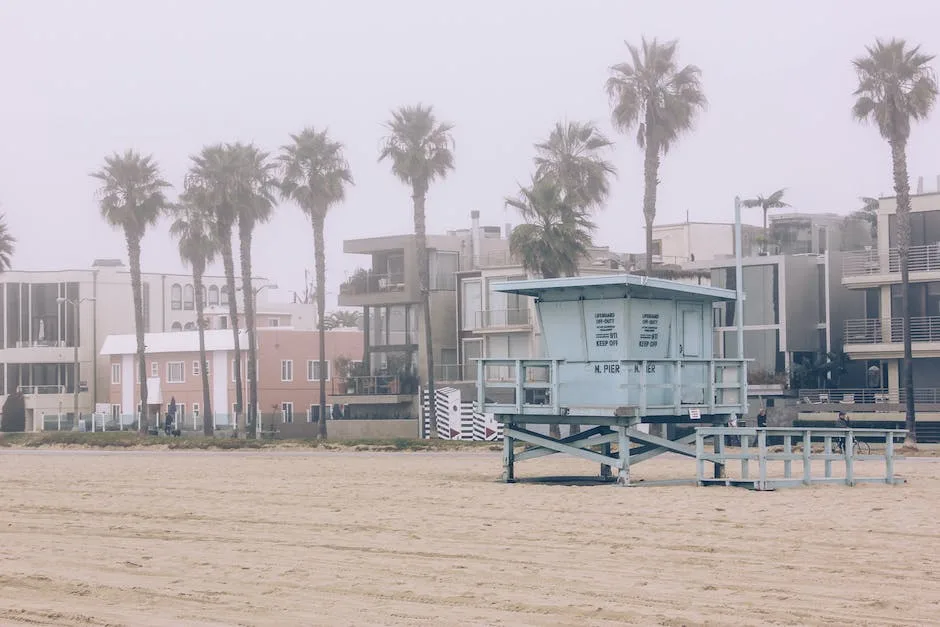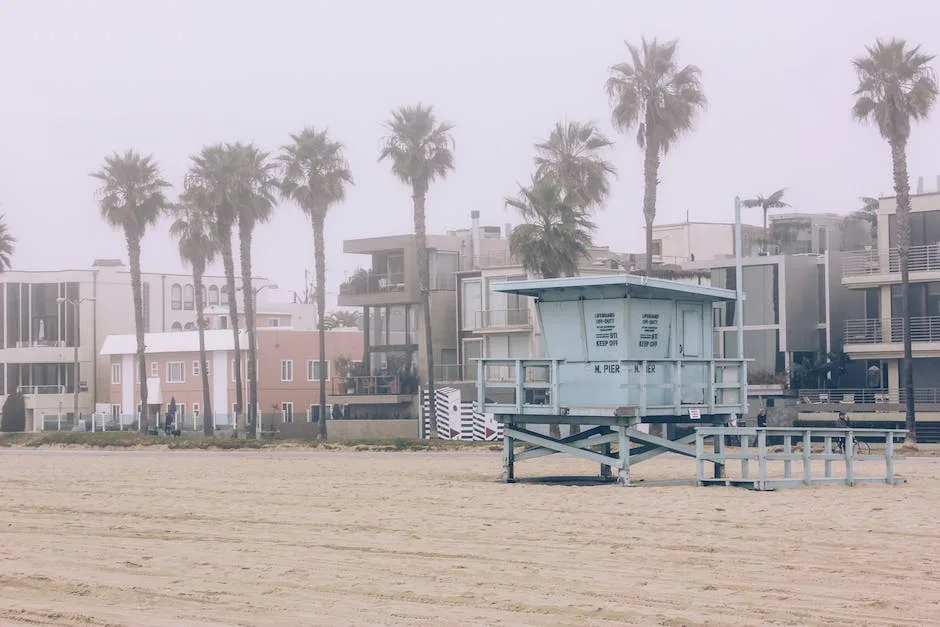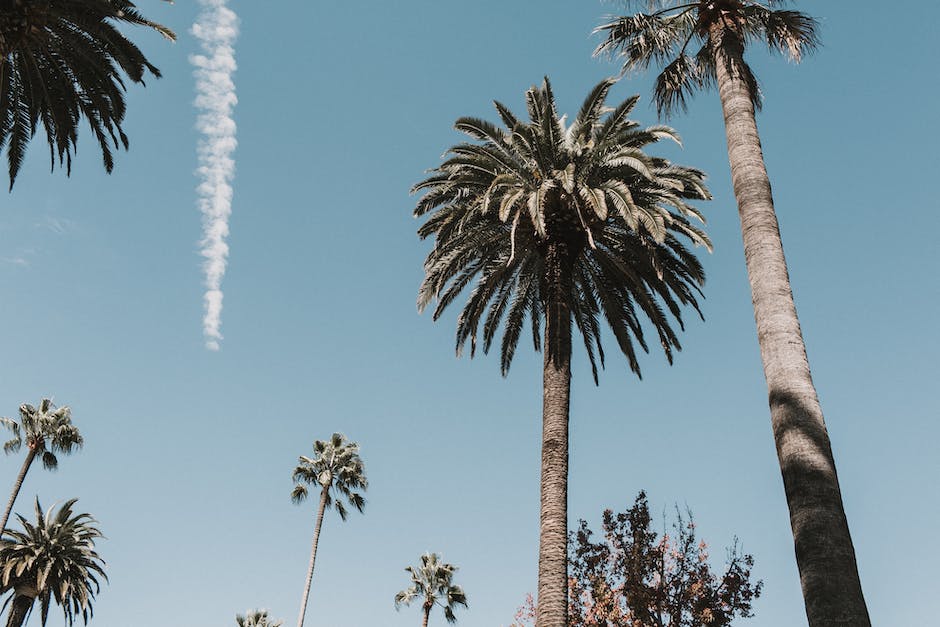California is one of the most popular tourist destinations in the United States, and it’s easy to see why. With its beaches, theme parks, and year-round mild weather, the Golden State has something for everyone. But what many people don’t realize is that palm trees are not naturally found in California. That’s right, those iconic symbols of Californian beaches are actually not native to the state. So how did they get there?
No, palm trees are not native to California.
Is palm tree native to California?
The Washingtonia filifera, commonly known as the California palm or the California fan palm, is the only palm tree species native to the state of California. The palm tree is native to areas within the Colorado Desert and the Mojave Desert.
Although palm trees are now ubiquitous in California, they are not native to the state. Most of the palm varieties you see were imported from different regions in the 19th century.
Do palm trees only grow in California
The palm tree is a symbol of Southern California, but the only truly native palm is the California fan palm or Washington palm (Washingtonia filifera). All other varieties were originally imported.
Most palms are native to tropical and subtropical climates. Palms thrive in moist and hot climates but can be found in a variety of different habitats. Their diversity is highest in wet, lowland forests. South America, the Caribbean, and areas of the South Pacific and southern Asia are regions of concentration.
Why do palm trees only grow in California?
The trees were able to grow in places like Mexico and California because they were living in a climate similar to the one in their old habitat Palm trees love warm weather Under the right conditions, they can live to be 80 or 90 years old.
The palm trees were originally from Mexico and California and they were able to grow in those climates because the conditions were similar to their old habitat. Palm trees love warm weather and they can live for a long time if they are in the right conditions.
Coconut palms are one of many palms that California has virtually no coconuts due to lack of water and humidity as well as commonplace temperatures under 60 degrees Fahrenheit.
Do palm trees grow naturally in San Francisco?
The palms around here are mostly not native to Washington state. The only native palm is the Washingtonia filifera, or the California palm. This palm prefers arid regions, such as Palm Springs, over the Bay Area.
Palm trees definitely have a presence in Los Angeles and can be seen everywhere you go. They provide a beautiful silhouette against the blue skies and are definitely a iconic symbol of the city. If you’re driving around, you’ll definitely see them towering over the concrete barriers on the highways.
What is the only native palm to California
Palm trees are a common sight in Los Angeles, and come in a wide variety of species. However, only one kind of palm – the Washingtonia filifera, or California fan palm – is actually native to California. The rest come from a variety of other places, including Mexico, South America, and even the Mediterranean.
Most of the palms that are native to the United States are found in the southeastern and southern states, with only one species occurring in the West. These palms belong to 9 different genera and can be found from North Carolina through Florida and the Gulf Coast into Texas and as far inland as Arkansas and southeastern Oklahoma.
Why is Florida not planting palm trees?
It is important to consider the average palm in southern Florida only sequesters 5 pounds of CO2 per year when deciding what type of trees to plant. While other trees such as oaks, mahogany, pines, and cedars can absorb more than 3,000 pounds of CO2 over their lifetime, it is still best to plant a mix of different trees to get the most benefit for sequestering carbon.
When planting palm trees in the state, it is important to consider the climate and the type of soil in the area. Areas with cold winters may not be suitable for some types of palms, and areas with clay soil may retain too much water for others.
How did California get palm trees
Palms were first introduced to California by the Spanish missionaries in the late 1700s. They were used for ornamental purposes, to symbolize the Biblical nature of the missions, and for practical purposes, in religious ceremonies.
The washingtonia filifera, or California fan palm, is a species of palm tree that is native to the deserts of the southwestern United States. These palms are widely cultivated in California and are often used as ornamental plants in public spaces. Despite their name, California fan palms are not actually from California; they are native to the deserts of the southwestern United States. These palms are well-adapted to desert conditions and can withstand harsher weather than most other palm trees.
Are palm trees native to San Diego?
The San Diego landscape is dotted with palm trees, but these tropical plants are not native to our region. In fact, the only known native palm tree to Southern California is the desert fan palm (Washingtonia filifera), which is found in the desert.
Palms first arrived in what is now San Francisco in the 1700s, when Spanish missionaries planted them for use in religious ceremonies. More than 200 years later, palms remain a striking and iconic feature of the cityscape.
How did palm trees come to the US
Date palm trees were first introduced to California by Spanish Franciscan and Jesuit missionaries in 1769. The missionaries likely planted the trees for ornamental reasons and because of Biblical associations. Around the turn of the 20th century, other palm tree seeds from Egypt, Mexico, and other places were brought to California by immigrants.
The palm tree has a long and ricgh history in Los Angeles. Prized for their unique look, they were first planted by wealthier Angelenos in the late 1800s as a decorative plant. However, it wasn’t until the 1930s that the palm really became popular, when around 25,000 of them were planted by workers as part of an unemployment relief program ahead of the Olympic games. Since then, the palm has become an icon of Los Angeles, symbolizing the city’s laid-back, sunny lifestyle.
Why are there no palm trees in New York
There are several reasons why palm trees are not a common sight in New York (or Boston and Chicago for that matter). The main reason is that the climate in these parts of the country is simply not conducive to palm trees. Palm trees need warm weather and lots of sunlight to thrive and unfortunately, New York (and the other two cities mentioned) just don’t have that kind of weather. Additionally, palm trees require quite a bit of maintenance and care – something that many people living in these cities simply don’t have the time or patience for. So, all things considered, it’s really not surprising that palm trees aren’t a common sight in New York.
However, the palm tree is not a native plant to Florida. It is actually native to Southeast Asia and was brought to Florida by people. The palm tree was first introduced to Florida in the late 1800s and has become a common part of the landscape since then.
Do palm trees naturally grow in Las Vegas
Despite the fact that most palm trees are either subtropical or tropical, they can actually grow in some pretty unexpected places. For example, did you know that you can grow palm trees in Las Vegas? Yep – just check out all the different kinds that you can find there, from Date Palms to Mexican Fan Palms, and Mediterranean Fan Palms. So if you’re ever feeling palm-tree-envy in a place you didn’t expect, don’t worry – you might just be able to find one growing there.
The Mexican fan palm is a tall, slender palm tree that is common in Las Vegas. These trees can reach heights of75 feet or more. Mexican fan palms are characterized by their tall, slender trunks.
The second type of palm tree commonly found in Las Vegas is the Canary Island Date Palm, or Phoenix canariensis. These palms are shorter than Mexican fan palms, and have a thicker trunk. They typically grow to heights of 40-50 feet.
The third type of palm tree in Las Vegas is the true date palm, or Phoenix dactylifera. These palms are characterized by their long, drooping leaves. They can grow to heights of 80 feet or more.
The fourth type of palm tree commonly found in Las Vegas is the bottle palm, or Hyophorbe lagenicaulis. These palms are characterized by their short, stocky trunk and their round, bulbous leaves. They typically grow to heights of 15-20 feet.
Do palm trees naturally grow in Hawaii
There are around 37 different species of the Loulu palm in Hawaii, making it one of the most diverse palm genera in the world. Hawaiian Loulu palms are an important part of the Islands’ history and culture, as they were one of the first plants to be introduced by the Polynesians. Today, Loulu palms are still an important part of Hawaiian life, being used for everything from lei making to thatching roofs.
The city of Naples, Florida is home to nearly 15,000 city palm trees. That’s a lot of palm trees! The city looks quite different than it would without all of those palm trees. Palm trees are native to the warm, dry climates of Africa, Asia, and the Americas. They are popular in Florida because they are adaptable to the warm, humid climate and they are also quite drought-tolerant. Palm trees add to the tropical feel of Naples and make it a unique place to live.
What is the difference between a California palm and a Mexican palm
There are a few main differences between Mexican fan palms and California fan palms. Mexican fan palms have slimmer trunks that grow taller, and their fronds are also shinier. Additionally, they are slightly less tolerant of frost and drought compared to California fan palms. In the following image, Mexican fan palm is on the left and California fan palm on the right.
The greenhouse gases that we are pumping into the atmosphere are not only warming the planet, but also causing it to heat up much faster than it ever has in the past. If we don’t do something to stop this, we could see the world reach a temperature similar to that of the early Eocene period within the next few hundred years. This would be a disaster for humanity and the natural world, as it would lead to mass extinctions, profound changes in climates and ecosystems, and untold suffering. We must act now to reduce our emissions of greenhouse gases, or we will condemn ourselves and future generations to a bleak future.
How far north do palm trees grow naturally in the US
The palm is a common sight in many North American households and is known for its ability to thrive in a wide range of climates. Hardy and adaptable, the palm is a versatile plant that can be used in a variety of landscaping designs.
The conversion of tropical forests to oil palm plantations has a devastating impact on plant and animal species. Oil palm production also leads to an increase in human-wildlife conflict as populations of large animals are squeezed into increasingly isolated fragments of natural habitat.
Warp Up
Yes, palm trees naturally grow in California.
Based on the evidence, it seems clear that palm trees do not naturally grow in California. Palm trees are native to tropical and subtropical regions, and while California does have a warm climate, it is not tropical or subtropical. There are many palm trees in California, but they were all planted there by people.
Jackson Hill is a passionate arborist with years of experience in the field of trees. He developed his fascination with trees at a young age, spending countless hours exploring the forests and climbing trees. Jackson went on to study arboriculture and horticulture at Michigan State University and later earned a degree in forestry from the University of Michigan.
With his extensive knowledge and expertise, Jackson has become a trusted authority on trees and their impact on the environment. His work has helped shape the field of arboriculture and he continues to be a leading voice in the industry.
